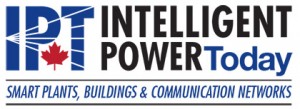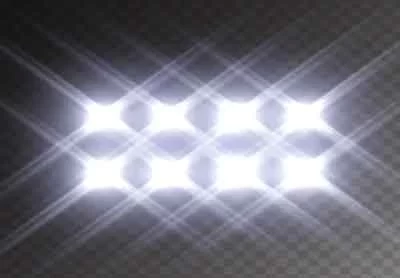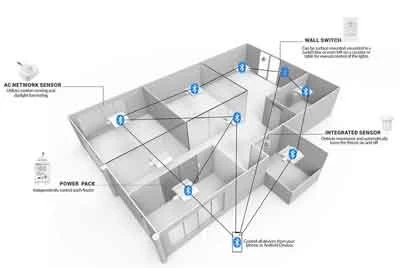Beyond Basic Sensors in Smart Lighting

In the realm of building automation, lighting control has evolved from basic on/off functionality to sophisticated systems capable of responding to detailed environmental and occupancy changes. Advanced sensors play a pivotal role in this evolution, enabling smarter, more energy-efficient, and user-friendly lighting solutions.
Building Automation Systems (BAS) play a crucial role in optimizing lighting control within modern buildings. Traditionally, BAS relied on basic occupancy sensors that simply detect presence or absence within a space. However, advancements in sensor technology are enabling the use of advanced occupancy detection and activity recognition systems. These advanced sensors go beyond basic binary detection and analyze movement patterns, offering a more nuanced understanding of space utilization.
The Limitations of Traditional Occupancy Sensors
Traditional occupancy sensors typically operate on a binary "vacant/occupied" model, triggering lighting based on motion detection. While effective in basic scenarios, these sensors often lack the granularity to understand the nuances of space usage, leading to inefficiencies such as lights remaining on in barely used spaces or turning off too quickly in still-occupied rooms.
Beyond Basic Occupancy Sensors
Traditional passive infrared (PIR) sensors are widely used in BAS for occupancy detection. These sensors detect changes in infrared radiation emitted by occupants and trigger lighting control actions (on/off) based on presence or absence. While effective for basic on/off control, PIR sensors have limitations:
- Limited Data: They provide binary data (occupied/unoccupied) without any additional information about the number of occupants, their location, or activity levels within the space.
- Inaccurate Detection: PIR sensors can be susceptible to false triggers due to factors like heat sources or movement outside the designated detection zone.
- Inability to Adapt: They cannot dynamically adjust lighting levels based on activity variations.
Advanced Occupancy and Activity Recognition Technologies
Emerging technologies in occupancy and activity recognition offer far more than mere motion detection, providing detailed insights into how spaces are used and enabling more nuanced lighting control.
Infrared and Ultrasonic Sensors
Infrared and ultrasonic sensors can detect not only the presence of individuals but also their level of activity, adjusting lighting accordingly. For example, these sensors can differentiate between a room with someone sitting still (reading or working at a desk) and a more active space, adjusting the lighting intensity or color temperature to suit.
Machine Learning and AI Integration
By integrating machine learning and artificial intelligence, lighting systems can analyze patterns of occupancy and activity over time, predicting usage and adjusting lighting proactively. This predictive approach can lead to significant energy savings and improved user satisfaction, as the lighting system learns and adapts to the daily rhythm of the space.
Camera-Based Sensors and Image Recognition
Camera-based sensors, coupled with advanced image recognition algorithms, can provide detailed information about the number of occupants, their location within the space, and their activity levels. This data enables a lighting system to adjust not only the intensity of light but also to direct light precisely where it's needed, enhancing efficiency and comfort.
Types of Advanced Occupancy and Activity Recognition Systems
Several technologies are used for advanced occupancy detection and activity recognition:
- Passive Infrared (PIR) with advanced algorithms: Building upon traditional PIR sensors, some systems utilize advanced algorithms to analyze movement patterns and differentiate between occupancy and non-occupancy events (e.g., equipment movement).
- Time-of-Flight (ToF) Sensors: These sensors emit light pulses and measure the reflected light's time-of-flight to create a 3D image of the occupied space. This allows for accurate detection of occupant location and activity levels.
- LiDAR (Light Detection and Ranging): Similar to ToF sensors, LiDAR uses laser pulses to create detailed 3D point clouds of the space. This allows for highly precise occupant counting and activity recognition.
- Camera-Based Systems: Video cameras paired with image processing software can be used to analyze occupant movement and activity within the space. However, privacy concerns need to be carefully considered when implementing such systems.
Benefits of Advanced Sensing in Lighting Control
Enhanced Energy Efficiency
By accurately matching lighting levels to actual usage and activity, advanced sensors can significantly reduce energy waste, contributing to a building’s sustainability goals.
Improved Occupant Comfort and Productivity
Smart lighting systems that adapt to specific activities and preferences can enhance occupant comfort, leading to increased productivity and well-being.
Greater Flexibility and Scalability
Advanced sensor technologies can be easily integrated into existing building automation systems, providing scalability and flexibility to adapt to changing needs and spaces.
Challenges and Considerations
Privacy and Ethical Concerns
Camera-based and advanced tracking technologies raise legitimate privacy and ethical concerns. It’s crucial to implement these systems in a way that respects occupant privacy, possibly through anonymized data collection and processing.
Technical Complexity and Cost
Implementing advanced sensing technologies can be technically complex and costly. The initial investment and ongoing maintenance require careful planning and justification, weighing the benefits against the financial and operational impact.
System Integration and Interoperability
Ensuring that advanced sensors seamlessly integrate with existing building automation systems is essential for functionality and user satisfaction. Compatibility and interoperability between different systems and devices must be a primary consideration in the design and implementation phase.
Leveraging advanced occupancy and activity recognition technologies marks a significant step forward in building automation and smart lighting control. These systems offer substantial benefits in terms of energy efficiency, occupant comfort, and operational adaptability. However, they also bring challenges that must be carefully managed, including privacy concerns, technical complexity, and integration requirements. As technology advances, these smart lighting systems are set to become even more integral to creating responsive, efficient, and user-friendly built environments.





